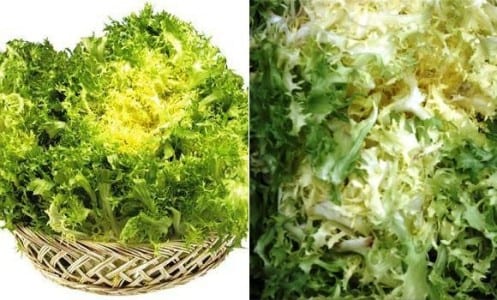
Endive is a plant in the same family as the artichokes or thistles, Asteraceae. It was already known and consumed by the ancient Egyptians, Greeks and Romans, although sometimes with more medicinal than culinary use. In fact, in Egyptian literature there are references to the cooked and raw consumption of this vegetable in salad.
Its introduction in Europe dates from the 60th century. In Spain, the cultivation of curly-leaf endives is more traditional than that of the smooth and broad-leaved variety, which comes from the XNUMXs. The main productions focus on Catalonia, Valencia and Murcia, of which a good part is dedicated to exports to countries such as France, Germany and the Netherlands. In contrast, endive crops of Badajoz, Granada and Toledo It serves to supply the national demand.
The endive season itself is the winter time, which is when it offers its splendor and highest quality, although today it can be found in the market throughout the year.
From the endive, humans consume the rosette, made up of 50 or more smooth or curled leaves (especially the winter varieties), attached to a white midrib. Its color can range from dark green to yellow. The outer leaves are darker and the inner ones yellow or white. It has a herbaceous, pleasant and characteristic flavor for being sweet and slightly bitter at the same time.. It is that bitterness that can make children not sympathetic to endive, but We can serve it with other salad leaves to which they are more accustomed, such as lettuce., or dress it with sweet and sour vinaigrettes with honey, fruits or nuts.
It is advisable to choose endives with fresh, firm, tender leaves and a good green color, especially the external ones, and reject those of brownish or yellowish colors. Once at home, we take them out of the packaging so that they breathe well and remove the deteriorated leaves that may spoil the rest to store them in the refrigerator or in a cool place protected from light. In general, smooth endive leaves stay fresh longer than curly endive leaves. It is advisable to keep them unwashed so that they stay fresh longer.
Regarding its nutritional value, like the rest of leafy vegetables, endive is low in calories, given its low content of energy nutrients such as carbohydrates, proteins and fats. Rich in water, it has water-soluble vitamins such as B1, B2, C and the folatesBeing the richest vegetable in this vitamin with difference over the rest. Its content in minerals such as calcium, magnesium, iron, zinc and potassium is also important, the latter being the most abundant. Endive leaves contain intibin, a compound responsible for its bitter taste and the digestive and appetite stimulating benefits attributed to this vegetable. We also remind you that folates are involved in the production of red and white blood cells, in the synthesis of genetic material and in the formation of antibodies to the immune system, which is why they help us fight infections.
Image: Vidasana, Lolabotijo